Rutilated quartz is a type of quartz crystal that contains needle-like inclusions of the mineral rutile (titanium dioxide). These fine, golden, or reddish-brown needle-like threads of rutile can be distributed throughout the quartz crystal in various patterns, creating striking and mesmerizing visual effects. The rutile inclusions are often arranged in parallel or radiating patterns, making rutilated quartz a popular and prized gemstone in the world of jewelry and crystal healing.
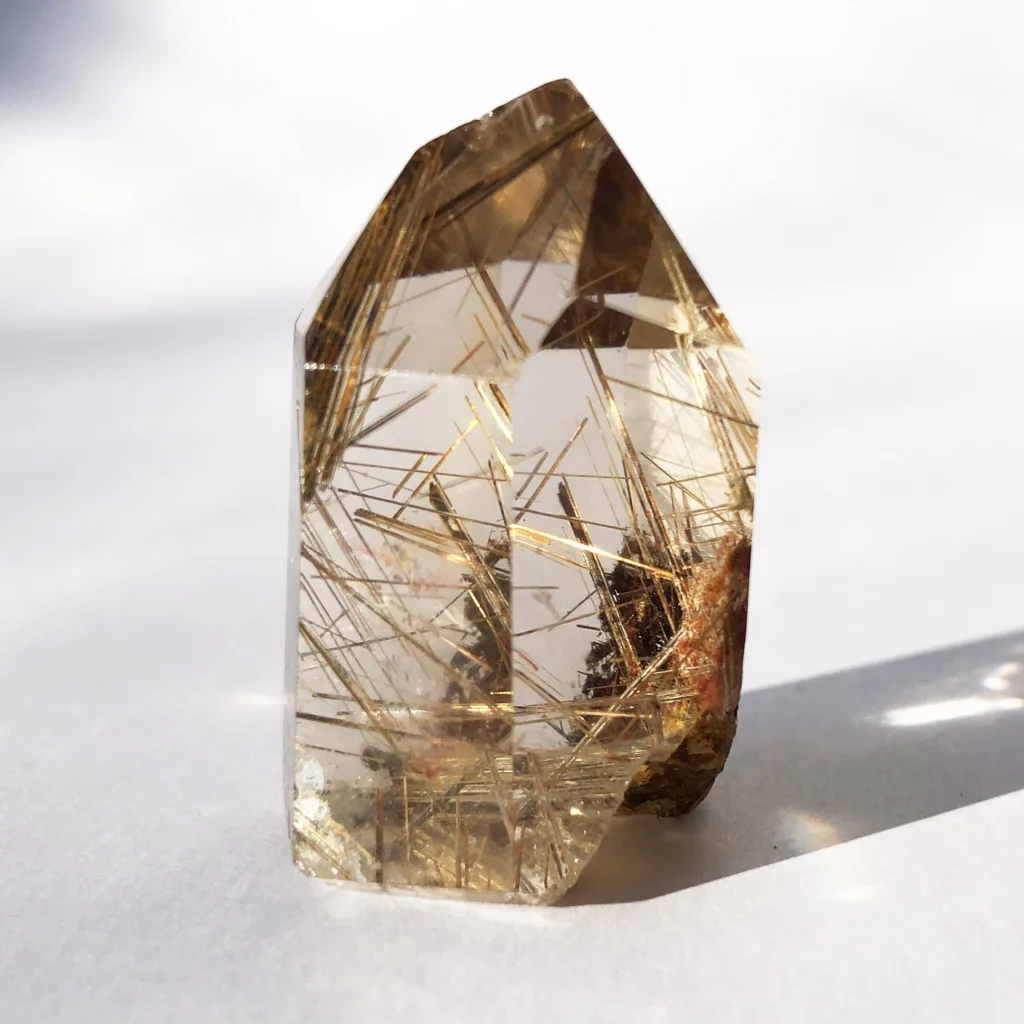
Historical Significance: Rutilated quartz has a rich history that spans across different cultures and civilizations. While the use of quartz crystals in various forms dates back thousands of years, rutilated quartz, with its distinctive rutile inclusions, has held particular significance:
- Ancient Beliefs: In ancient civilizations, including those in Egypt, Greece, and Rome, quartz crystals were highly valued for their mystical and healing properties. Rutilated quartz, with its captivating appearance, was often associated with divine energy and considered a powerful talisman.
- Crystal Healing: Rutilated quartz has been a popular crystal in the world of metaphysical and crystal healing. It is believed to have a variety of healing properties, including enhancing spiritual growth, promoting clarity of mind, and amplifying energy. Some practitioners claim that rutilated quartz can help release negative energy and blockages in one’s life.
- Modern Usage: In contemporary times, rutilated quartz remains highly sought after in the jewelry industry. Its unique appearance makes it a favorite choice for gemstone enthusiasts and collectors. Many jewelers create exquisite pieces featuring rutilated quartz, highlighting its beauty and elegance.
- Spiritual and New Age Practices: Rutilated quartz is often used in meditation and spiritual practices. It is associated with the crown chakra, which is thought to be the center of spirituality and enlightenment. Some individuals use rutilated quartz to aid in meditation and spiritual exploration.
In summary, rutilated quartz is a type of quartz crystal prized for its mesmerizing rutile inclusions. Throughout history, it has been associated with various cultural and spiritual beliefs, making it a fascinating and valuable gemstone in both ancient and modern times. Whether appreciated for its aesthetic appeal or believed metaphysical properties, rutilated quartz continues to captivate people around the world.
Geological Formation and Occurrence
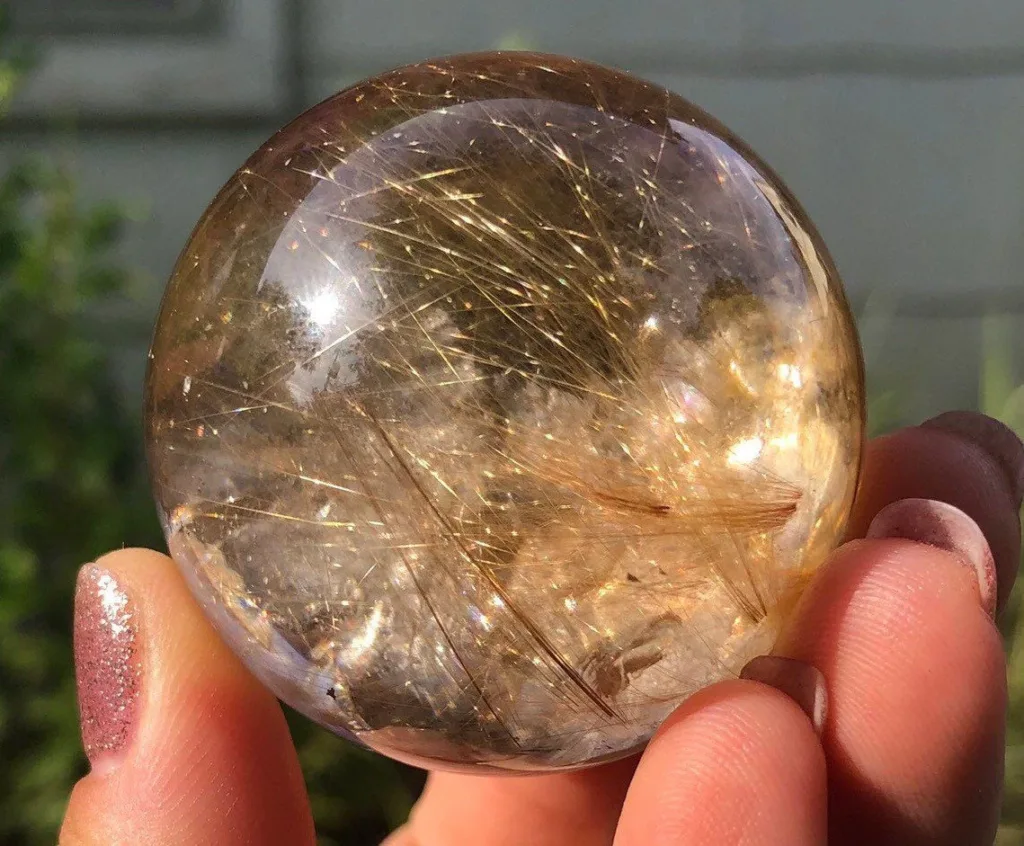
The formation and occurrence of rutilated quartz are closely tied to the geological processes that create quartz crystals and introduce rutile inclusions into them. Here’s a breakdown of how rutilated quartz is formed and where it can be found:
Formation of Rutilated Quartz:
- Quartz Formation: Quartz is one of the most abundant minerals on Earth and forms under a variety of geological conditions. It is primarily composed of silicon dioxide (SiO2). Quartz crystals can develop in various types of rock, including igneous, metamorphic, and sedimentary rocks.
- Rutile Inclusions: The formation of rutilated quartz occurs when needle-like crystals of rutile (titanium dioxide, TiO2) are trapped within growing quartz crystals. These rutile crystals can take on various colors, but they are most commonly golden or reddish-brown, creating a striking contrast with the transparent or translucent quartz.
- Inclusion Process: The rutile inclusions can be introduced into the growing quartz crystal through various geological processes. These processes can include hydrothermal activities, where hot mineral-rich fluids flow through rock fractures and carry minerals like rutile into cavities within the quartz crystals. Rutile needles can also form during the growth of quartz in the presence of titanium-rich mineral sources.
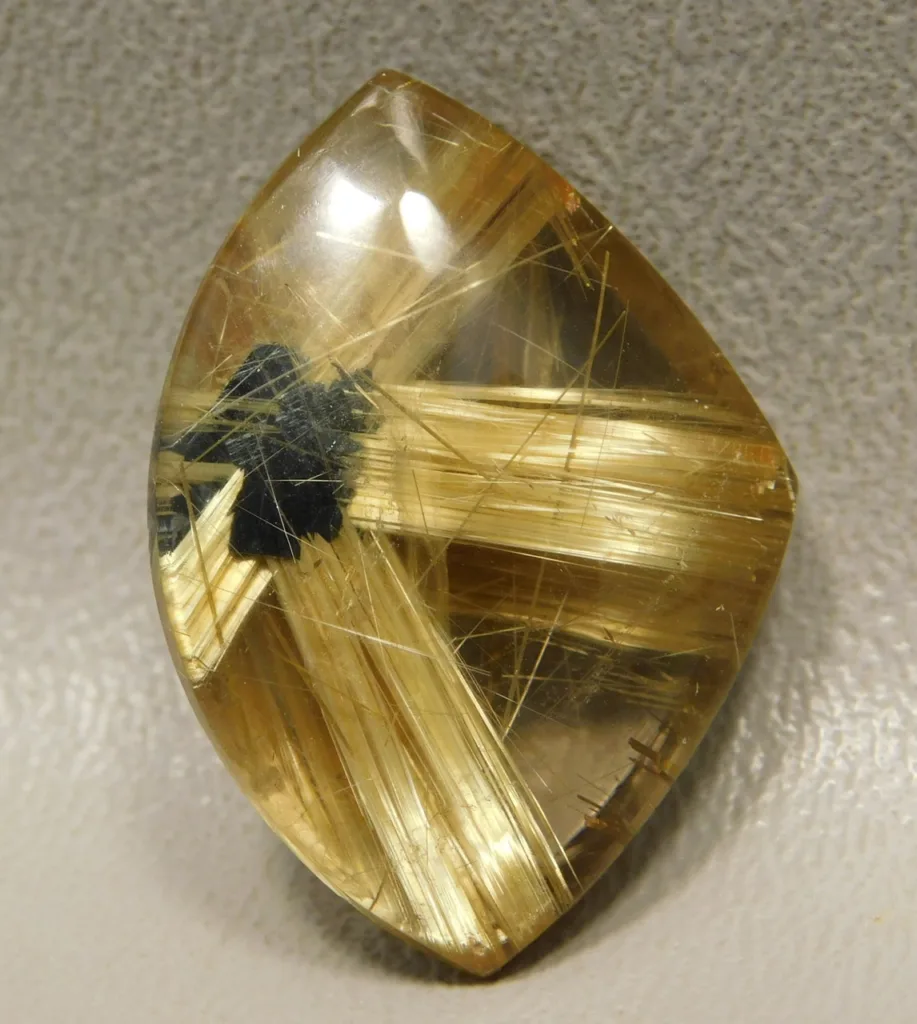
Occurrence of Rutilated Quartz:
- Brazil: Brazil is one of the most famous sources of rutilated quartz. The country is known for producing high-quality specimens with well-defined rutile inclusions. The Minas Gerais region in Brazil is particularly renowned for its rutilated quartz deposits.
- Madagascar: Madagascar is another significant source of rutilated quartz. This island nation in the Indian Ocean is known for producing rutilated quartz with varying rutile needle colors and patterns, making it highly sought after by gem collectors and enthusiasts.
- Other Locations: Rutilated quartz can be found in other parts of the world as well, including the United States, Australia, Switzerland, and Pakistan. However, the quality and quantity of rutilated quartz from these locations may vary.
- Alluvial Deposits: In some cases, rutilated quartz can be found in alluvial deposits, which are deposits of minerals and rocks that have been transported by rivers or other natural processes. These deposits can yield rutilated quartz as a result of weathering and erosion of host rocks.
Rutilated quartz is relatively rare, and the quality of specimens can vary widely based on the clarity, color, and abundance of the rutile inclusions. Its striking appearance and metaphysical properties have made it a popular gemstone and crystal for jewelry and spiritual practices, contributing to its continued desirability and global demand.
Physical and Chemical Properties
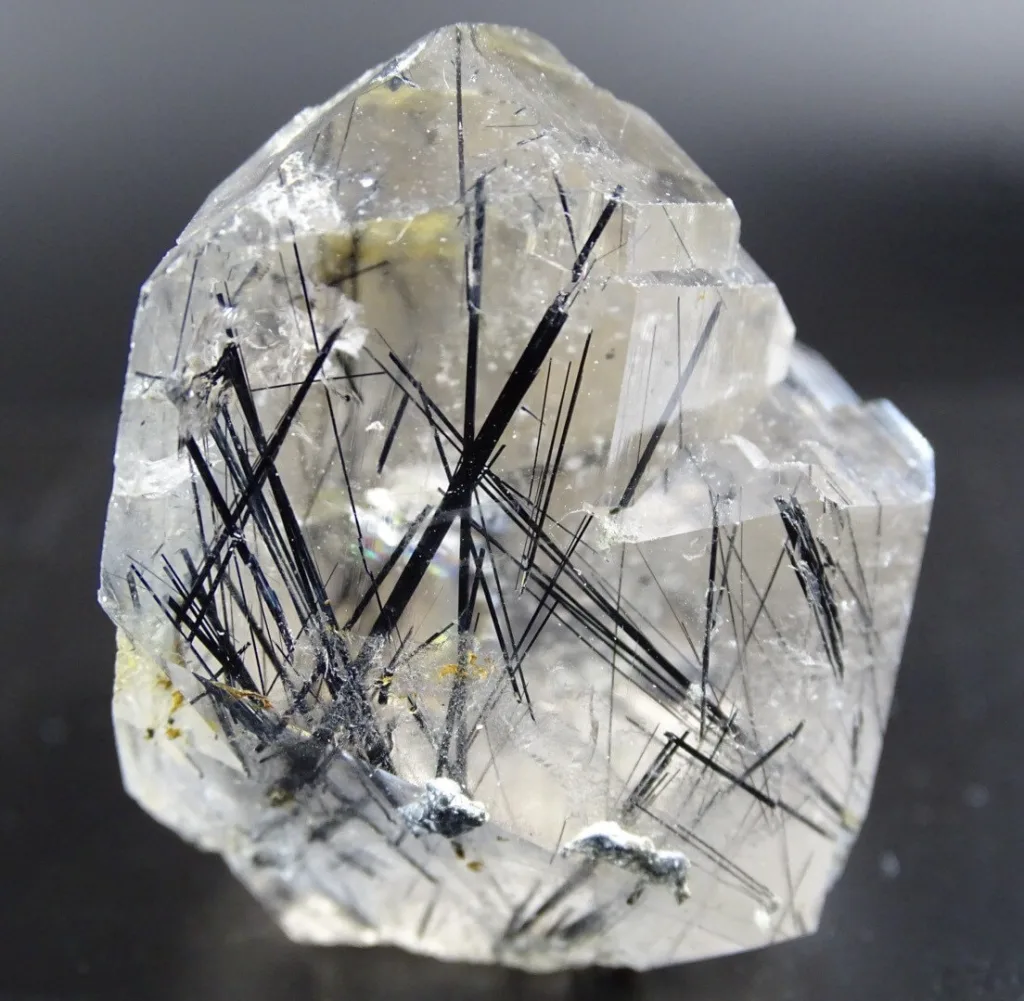
Rutilated quartz is a fascinating gemstone known for its distinct physical and chemical properties. Here are some of the key characteristics of rutilated quartz:
Physical Properties:
- Color: Rutilated quartz is primarily transparent or translucent and ranges from colorless to smoky gray or brown. The most distinctive feature is the presence of golden or reddish-brown needle-like rutile inclusions that create striking patterns within the quartz.
- Luster: It typically exhibits a vitreous (glass-like) to submetallic luster due to the presence of the rutile inclusions.
- Transparency: Rutilated quartz is generally transparent to translucent, allowing light to pass through, which enhances the visibility of the rutile needles.
- Crystal System: Like all quartz varieties, rutilated quartz belongs to the hexagonal crystal system. It forms hexagonal prismatic crystals with a six-sided cross-section.
- Hardness: It has a hardness of 7 on the Mohs scale, making it relatively durable and suitable for use in jewelry.
- Cleavage: Rutilated quartz does not exhibit cleavage. Instead, it has a conchoidal fracture, which means it breaks with smooth, curved surfaces.
- Specific Gravity: The specific gravity of rutilated quartz typically ranges from 2.65 to 2.91, depending on the composition and density of rutile inclusions.
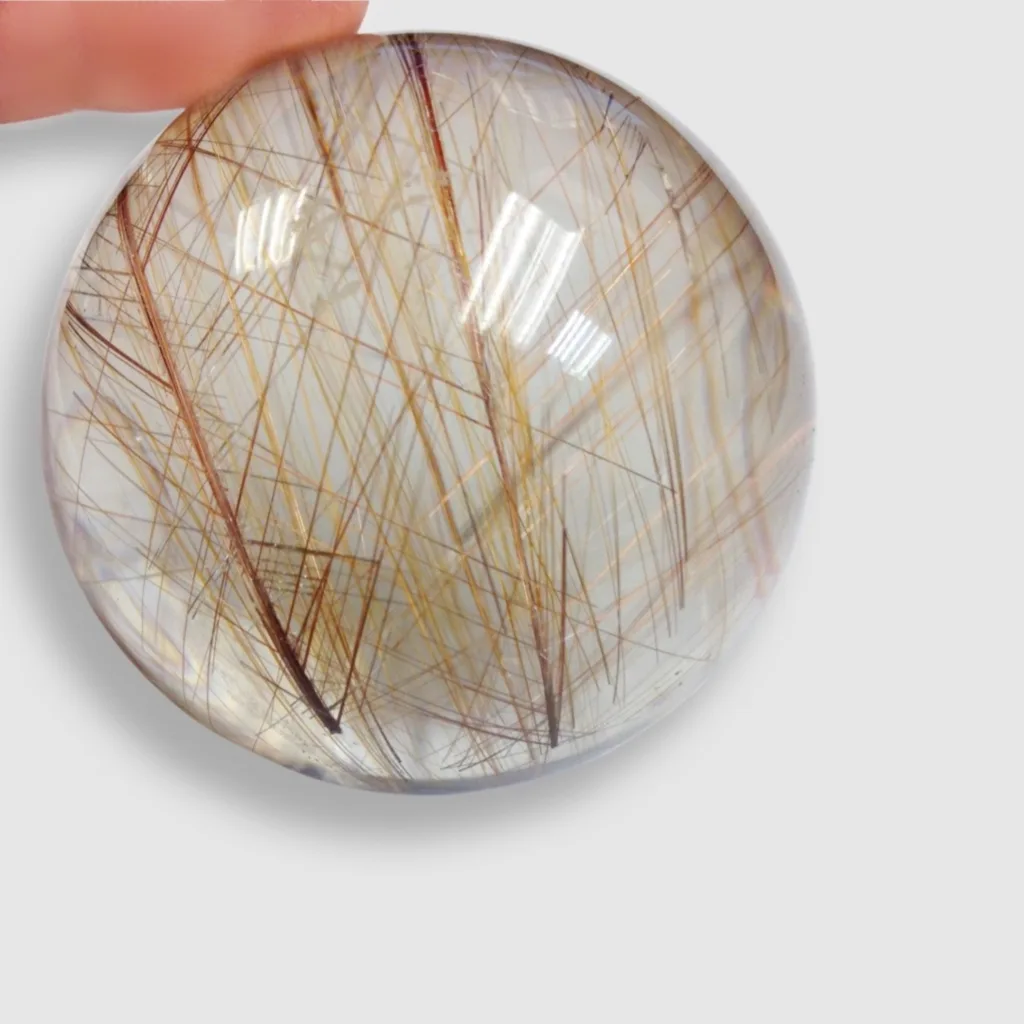
Chemical Properties:
- Chemical Composition: Rutilated quartz is primarily composed of silicon dioxide (SiO2), the same chemical composition as all varieties of quartz. The rutile inclusions within the quartz are composed of titanium dioxide (TiO2).
- Inclusions: The rutile inclusions are the defining feature of rutilated quartz. These needle-like rutile crystals are typically composed of titanium dioxide and can vary in color, including golden, reddish-brown, or even black. The rutile inclusions often form parallel or radiating patterns within the quartz.
- Impurities: Like other quartz varieties, rutilated quartz may contain trace amounts of impurities that can impart subtle colors to the crystal, but the dominant coloration comes from the rutile inclusions.
- Refractive Index: Rutilated quartz has a refractive index (RI) of approximately 1.54 to 1.55, which contributes to its brilliance and sparkle.
- Optical Properties: It exhibits birefringence, a property where light is split into two rays as it passes through the crystal. This can create interesting optical effects when viewing rutilated quartz.
Overall, rutilated quartz’s physical and chemical properties make it a unique and visually captivating gemstone, prized for its distinctive appearance and metaphysical significance. Its durability, transparency, and hardness make it suitable for various jewelry applications, while its rutile inclusions add a touch of natural beauty and intrigue.
Rutile Inclusions
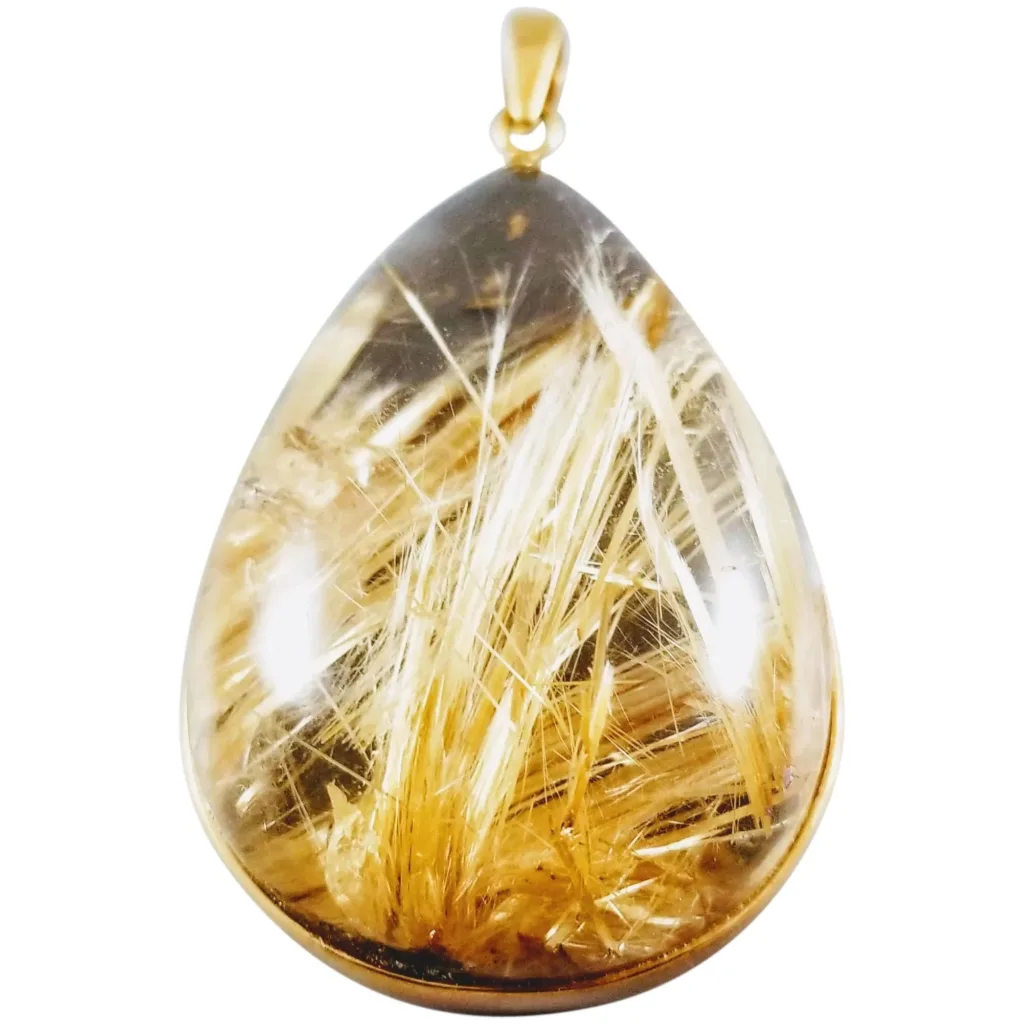
Rutile inclusions are needle-like crystals of the mineral rutile (titanium dioxide, TiO2) that are often found within other minerals, most notably in quartz, but also in various other host minerals. These inclusions are characterized by their slender, elongated shape and can vary in color, with golden or reddish-brown being the most common, although they can also appear black or even silver.
Here are some key aspects of rutile inclusions:
1. Appearance: Rutile inclusions in quartz and other minerals appear as tiny, slender needles or threads. They can range from very fine and delicate to thicker and more prominent, depending on the specific specimen.
2. Formation: Rutile inclusions are formed during the growth of the host mineral. In the case of rutilated quartz, for example, rutile needles become trapped within the quartz crystal as it forms. The exact mechanisms of inclusion formation can vary, but they often involve the presence of rutile-rich fluids or minerals during the crystallization process.
3. Color: The color of rutile inclusions can vary depending on impurities and conditions during their formation. The most common colors are golden and reddish-brown, which can create striking contrasts when embedded in transparent or translucent host minerals like quartz. However, rutile inclusions can also be black or nearly colorless.
4. Optical Effects: Rutile inclusions can have interesting optical effects when viewed under proper lighting conditions. In rutilated quartz, for example, these inclusions can create a chatoyancy or “cat’s-eye” effect, where a band of light appears to move across the surface of the stone as it is rotated. This optical phenomenon adds to the gemstone’s allure and value.
5. Metaphysical Significance: In metaphysical and crystal healing practices, rutile inclusions are believed to have various properties, including the enhancement of energy flow, the promotion of spiritual growth, and the clearing of negative energy. The specific metaphysical properties attributed to rutile inclusions can vary depending on the belief system and tradition.
6. Geological Significance: The presence of rutile inclusions can provide valuable information to geologists about the geological history and conditions under which a mineral specimen formed. Studying rutile inclusions can help researchers understand the mineral’s growth environment and its chemical composition.
7. Use in Jewelry: Rutile inclusions, especially in the form of rutilated quartz, are highly prized in the jewelry industry. Jewelry designers and gemstone enthusiasts appreciate the unique and captivating appearance of rutilated quartz, often using it in rings, pendants, earrings, and other jewelry pieces.
In summary, rutile inclusions are slender needle-like crystals of rutile that are commonly found within various minerals, adding visual interest and sometimes unique optical effects. They have both geological and metaphysical significance, making them a subject of interest to geologists, gemologists, and individuals interested in crystal healing and gemstone aesthetics.
Varieties and Types
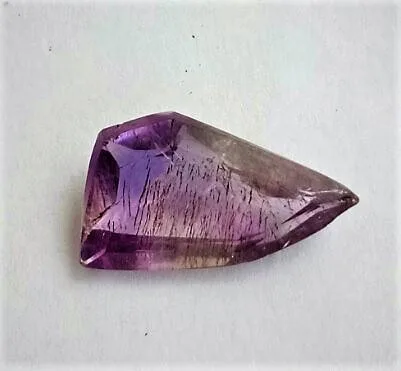
Rutilated quartz is a specific variety of quartz known for its rutile inclusions, but within the realm of quartz and other minerals, there are various other varieties and types, each with its unique characteristics. Here are some notable varieties and types:
1. Amethyst: Amethyst is a purple variety of quartz. It gets its color from trace amounts of iron and other impurities. This variety is known for its deep purple hues and is often used in jewelry and as a healing crystal.
2. Citrine: Citrine is a yellow to orange variety of quartz. It is formed when amethyst or smoky quartz undergoes heat treatment. Natural citrine is relatively rare, and most citrine on the market today is heat-treated amethyst or smoky quartz.
3. Rose Quartz: Rose quartz is a pink to pale pink variety of quartz. It is often associated with love and healing and is used in jewelry, carvings, and as decorative stones.
4. Smoky Quartz: Smoky quartz is a brown to grayish-brown variety of quartz. Its color is caused by natural irradiation of clear quartz. It is known for its transparency and can be cut into gems or used as ornamental stones.
5. Aventurine: Aventurine is a variety of quartz that often contains tiny inclusions of mica, hematite, or other minerals, giving it a sparkly or “aventurescent” appearance. Green aventurine is the most common color, but it can also be found in shades of blue, brown, and orange.
6. Ametrine: Ametrine is a unique variety of quartz that exhibits both amethyst and citrine colors within the same crystal. It typically has zones of purple and yellow or orange, and it is prized for its striking appearance.
7. Milky Quartz: Milky quartz is a translucent to opaque white variety of quartz. It gets its milky appearance from microscopic fluid inclusions. While it is not as valuable as clear quartz, it is still used in jewelry and carvings.
8. Prasiolite (Green Amethyst): Prasiolite is a green variety of quartz that is often created by heat treatment of amethyst or citrine. Its color can range from pale green to a deep green hue.
9. Snow Quartz: Snow quartz is a milky white variety of quartz characterized by its snowy appearance. It is often used in beadwork and as an ornamental stone.
10. Chalcedony: Chalcedony is a broader category of microcrystalline quartz that includes various subtypes like agate, jasper, and onyx. These types of chalcedony can exhibit a wide range of colors, patterns, and banding.
These are just a few examples of the many varieties and types of quartz and quartz-related minerals. Quartz is incredibly diverse and can manifest in various forms, colors, and patterns, making it a popular choice for gemstone enthusiasts and collectors. Each variety often has its unique metaphysical and aesthetic qualities, making them sought after for various purposes, including jewelry, healing practices, and decorative uses.
Rutilated Quartz Uses Areas
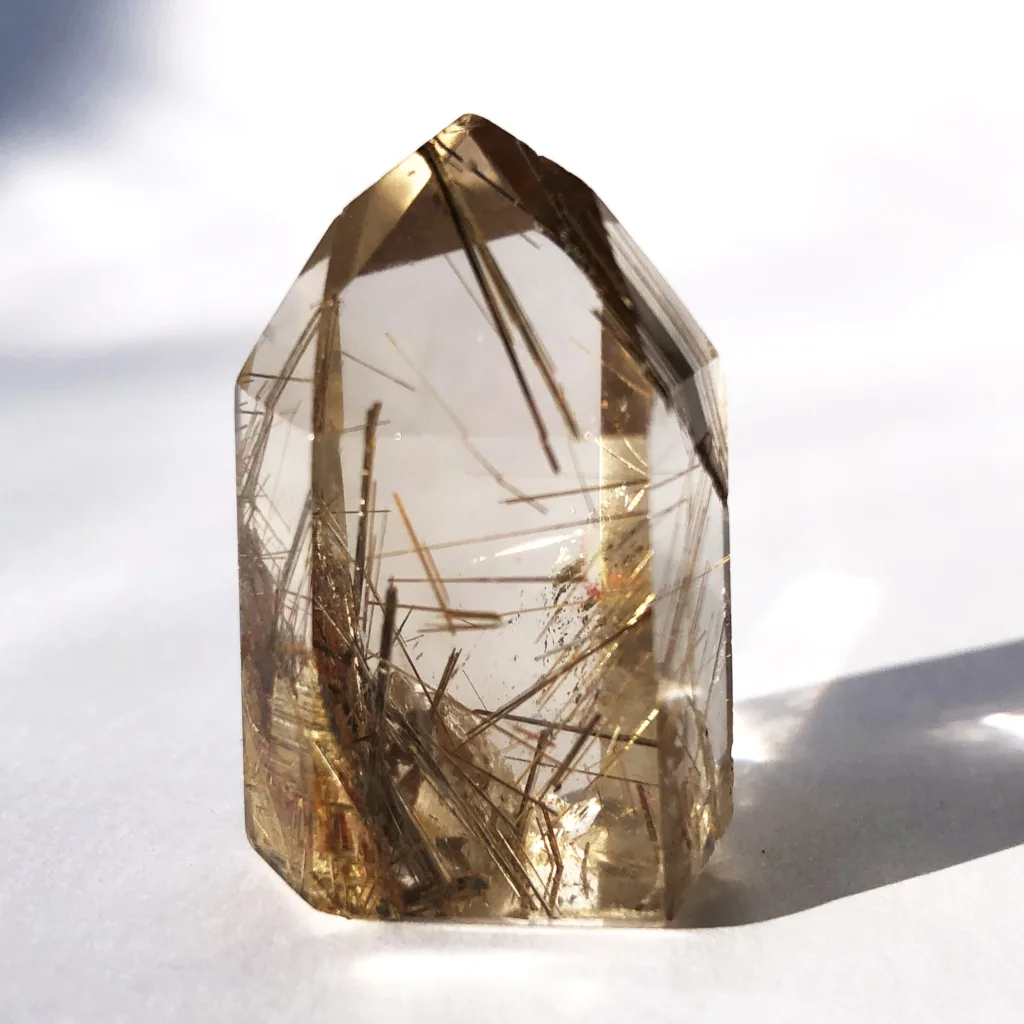
Rutilated quartz is a versatile and visually striking gemstone, and it finds applications in several areas, including:
1. Jewelry: Rutilated quartz is a popular choice for jewelry, especially for unique and eye-catching pieces. Its distinctive golden or reddish-brown rutile inclusions set against the transparent or translucent quartz base make it an attractive gemstone for rings, pendants, earrings, bracelets, and necklaces.
2. Healing and Metaphysical Practices: Rutilated quartz is highly regarded in the world of crystal healing and metaphysical practices. It is believed to have various properties, such as enhancing spiritual growth, promoting clarity of mind, and amplifying energy. Some people use rutilated quartz for meditation, chakra work, and balancing energy.
3. Collectibles: Rutilated quartz specimens with exceptionally well-defined and intricate rutile inclusions are sought after by collectors and enthusiasts. These specimens are valued for their aesthetic appeal and geological uniqueness.
4. Home Decor: Rutilated quartz can be used as decorative items in homes or office spaces. Larger pieces of rutilated quartz can be displayed as sculptures, paperweights, or bookends, adding a touch of natural beauty and elegance to interior design.
5. Spiritual and Meditation Tools: Some individuals use rutilated quartz in spiritual and meditation practices. It may be incorporated into altars, meditation spaces, or crystal grids to enhance the energy and intention of these practices.
6. Crystal Grids: Rutilated quartz can be used in crystal grids, which involve arranging crystals in specific patterns for various intentions, such as healing, manifestation, or protection. Its unique energy and appearance can complement a crystal grid’s overall purpose.
7. Personal Empowerment: Some people carry rutilated quartz with them as a personal empowerment or grounding stone. It is believed to help individuals connect with their inner strength, overcome obstacles, and maintain a positive outlook.
8. Alternative Medicine: In some alternative medicine practices, rutilated quartz is used as part of energy healing therapies or as a focal point during sessions to facilitate balance and harmony.
9. Jewelry Design and Art: Jewelry designers and artists often use rutilated quartz in their creations due to its captivating appearance. The gemstone’s unique rutile inclusions can inspire innovative and artistic designs.
10. Gift Items: Rutilated quartz jewelry and decorative pieces make thoughtful and unique gift choices for special occasions, particularly for individuals who appreciate gemstones with distinct aesthetics.
It’s important to note that while rutilated quartz is treasured for its visual appeal and believed metaphysical properties, the efficacy of its healing and metaphysical attributes is subjective and varies among individuals. Whether for its beauty or its potential energetic qualities, rutilated quartz continues to captivate people around the world and serves a variety of purposes in different areas of life.




































